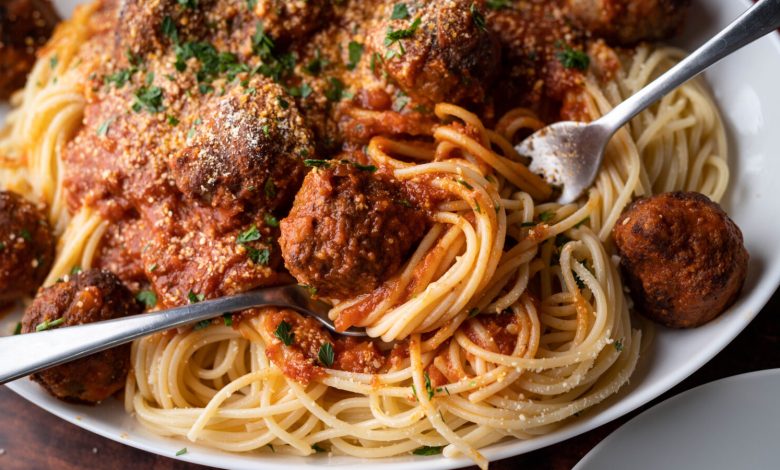A harm-reduction approach to eating out
Restaurants offering entrees in two sizes is a simple way to promote healthy eating

I once ordered the now-discontinued spaghetti and meatballs at Denny’s during a road trip several years ago. I knew exactly what was going on, but even though I knew there was no way I could complete the enormous platter when it was brought out, I did so because it was in front of me.
I study the food environment and how to promote better choices as an assistant professor of health policy. The enormous serving sizes that restaurants sell don’t aid us in making healthy decisions. Since some of those goods were originally launched, portions for packaged and fast foods in the United States have increased by up to five times, and in the last 50 years, the popularity of larger portions has skyrocketed.
People eat and drink what is placed in front of them, even if it is more than they anticipated or want, as my experience at Denny’s shows. In one study, participants who received 50% larger servings consumed 400 more calories on average each day. That is more calories than there are in two Krispy Kreme doughnuts. More calories over time, as we all know, equals weight growth. While there are many different contributing factors to the complex issue of excess weight gain, one harm reduction strategy we have is to reduce portion sizes.
I carried out a study with my team to demonstrate that there is an easy, affordable fix for this problem: It is recommended that restaurants begin serving their entrées in two sizes. Sit-down restaurants are beginning to offer sizing alternatives to their patrons, something that fast food establishments already do. There are lunch-sized versions of popular dishes at restaurants like Olive Garden and Cheesecake Factory called “SkinnyLicious.” However, a lot of people are uncomfortable placing an order from the stigmatizing “SkinnyLicious” menu. Other choices exist: In one study, my colleagues and I displayed a menu with two sizes of entrées to the participants. We designated the larger option as “large” and the smaller option as “standard.” The smaller size was not labeled for the control group. The smaller size was more frequently selected by those who saw the “standard” label.
It benefits diners, the general public’s health, and even the restaurant business to provide two sizes. Since more Americans than ever eat out these days, choosing the smaller entrée means avoiding the temptation to constantly overindulge. Reduced consumption of calories, saturated fat, and sodium by a sufficient number of people will improve public health. Likewise, the restaurant business can benefit from a tactic that major snack and beverage companies are already using. In other words, instead of trying to sell more sodas, they offer a wider variety of sizes to cater to different customer kinds and events. For instance, since launching the 7.5-oz small can nationwide in 2010, The Coca-Cola Company has seen a rise in income thanks to this strategy.
As a researcher in public health, I would prefer that individuals abstain from sugar-filled drinks completely. However, that isn’t practical. This method simplifies moderation. Typically, one can (7.5 oz) of soda equals one serving (7.5 oz). Similarly, instead of the current 1,390 calories, consuming a 695-calorie Cajun Shrimp & Chicken Pasta at TGI Fridays would only amount to consuming a maximum of 695 calories.
Our attitudes toward big meals grew progressively over time. Regaining us to a point where a 1,000-calorie entrée will elicit the appropriate shock will take time.
One issue is that many view upsizing as a method to cut costs: why spend $4 on 230 calories of fries when you can have twice as much for just $2 more? But the costs of gaining too much weight are not mentioned on the menu boards. The physical expenses include a higher chance of heart disease and type 2 diabetes. Then there are the monetary expenses: Overweight people pay twice as much for medical treatment each year on a personal basis and contribute more than $260 billion to medical expenses in society. The consequences on mental health and the difficulty of regaining weight are additional personal costs. However, in our study and others, we discovered that even when a lowered size costs a little bit more per ounce of food, people prefer it when it is given.
The wonderful thing about emphasizing portion sizes is that the goal is harm reduction rather than abstinence. The spicy jambalaya and fettuccine alfredo don’t have to be completely avoided. If eateries serve those 1,000+ calorie goods in smaller portions, customers can still enjoy their food without jeopardizing their health. By offering their patrons the opportunity to eat less, restaurants may experience a welcome paradox: more people may arrive at the table.




